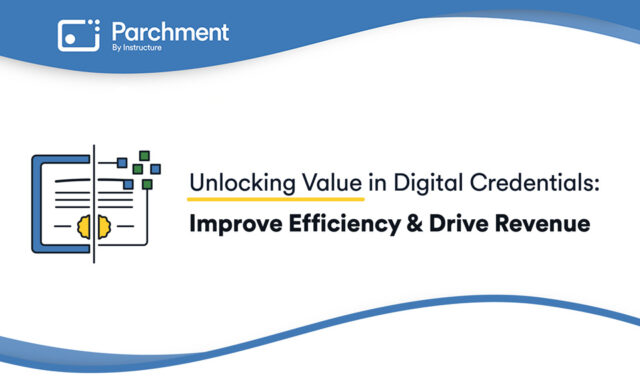Social media is quickly becoming one of the top tools of choice for hiring managers looking to connect with job seekers.
According to a report from the Society of Human Resource Management, a whopping 84 percent of employers use websites like LinkedIn, Facebook and Twitter to find and attract candidates – up from a mere 56 percent in 2011. Another 9 percent plan to do so in the near future.
Social media is also used as a screening tool. CareerBuilder found 70 percent of employers check candidate social media profiles to make sure the person in question is skilled and a good fit for the position. In fact, 3 in 10 employers have someone specifically dedicated to this task.
With so many businesses using social media for recruiting, schools should adjust their career services department methods to help students make the most of their online profiles. Here, we’ll break down what these recruiters look for and how verified copies of credentials can help students catch their eye.
Social recruiting strategies: What do employers look for?
Per the CareerBuilder survey, 61 percent of businesses scan a candidate’s social media profiles looking for details that support their qualifications for the job. Essentially, recruiters use social media to confirm or supplement details on the candidate’s application. And if you’re wondering if businesses use the details they find in a meaningful way, don’t worry: 44 percent said they’ve found content leading to a hire in the past.
In fact, a lack of online presence can hurt your student’s career search. Having no online accounts sounds good in theory, but CareerBuilder found 57 percent of employers are less likely to call a candidate if they can’t find that person’s presence on the internet.
In addition, posts that show personality can be an asset, as long as they’re still professional. Speaking with Fast Company, one former recruiter described how social posts help employers gauge whether candidates will fit with the company culture. Ariel Lopez, founder, and CEO of the career platform 2020Shift, told the publications that social profiles can help hiring managers to determine if a person has the right mix of “attitude and aptitude” for both the job and the company.
Using verified credentials to attract employer interest
As you can see, social media can be a great tool for your learners-turned-potential candidates. In fact, it’s arguably better to have a poor social presence than none at all. The objective, however, is to make sure your students know where to establish an online profile and what to include.
For recruiting and developing professional relationships, LinkedIn and Twitter are your students’ best bets (yes, Twitter is less professional overall, but a lot of industry players develop great networks on the site).
With that in mind, official transcripts and diplomas can definitely give your students’ social media page a boost when on the job hunt. These are certified, verifiable digital documents issued by your Institution that say a student has achieved a specific level of competency from his or her field. In fact, innovative digital credentials can include details beyond what is found in a traditional transcript or diploma, highlighting skill sets that might otherwise be hard for students to prove.
Also, it’s important to note that employers use social networks to find both passive and active candidates. Passive candidates are those who aren’t specifically looking for a job but may be swayed if a recruiter reaches out to them, while active candidates are those sending out their applications.
This, of course, means that students should share their transcripts or diplomas on social media regardless of whether or not they’re actively looking for a job. A recruiter may find them, see their credentials, and make them a better job offer than their current employer provides.
Want to know more about how your institution can start offering verified, digital credentials that are socially shareable and can help your learners compete for the job? Head over to the Parchment Award page, or check out our blog!
There’s always more to learn.




